Shipley Park - Miller-Mundy
Memories
w/e 02 December 2007
All
this week's pictures were taken with a Kodak DX6490

Part 12 - The Appendix
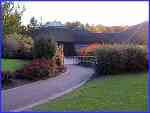 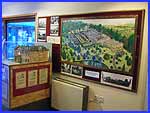 We completed the walk around Shipley Country
Park looking at the influence of the Miller-Mundy family in Part
11 when we arrived back at the Visitor Centre (left) and took
a brief look inside (right). I promised a closer look at the
exhibition there but before we get to that, this appendix gives
me the opportunity to review the series and see one or two more
places that were only briefly alluded to previously. We completed the walk around Shipley Country
Park looking at the influence of the Miller-Mundy family in Part
11 when we arrived back at the Visitor Centre (left) and took
a brief look inside (right). I promised a closer look at the
exhibition there but before we get to that, this appendix gives
me the opportunity to review the series and see one or two more
places that were only briefly alluded to previously.
|
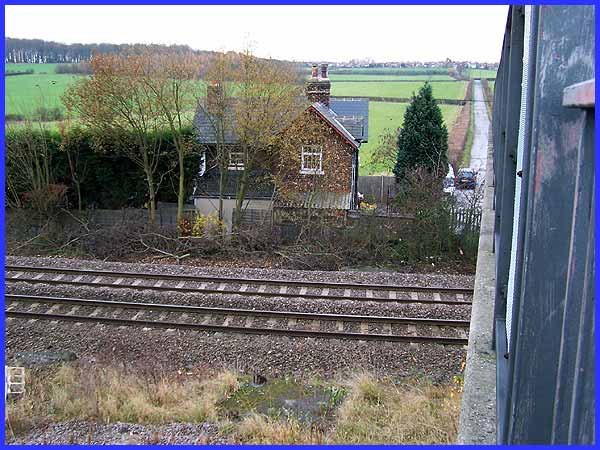
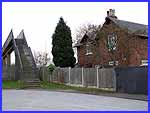 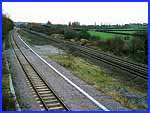 For
example, in the early part of the walk, we followed the Nutbrook
Trail along the route of the old railway lines almost as far
as the Woodside Colliery site. A branch line led from there to
the main line station at Shipley Gate. Station House still stands
at the bottom of Long Lane where there was previously a level
crossing. A footbridge now crosses the lines (left) but the platforms
have long since disappeared (right). For
example, in the early part of the walk, we followed the Nutbrook
Trail along the route of the old railway lines almost as far
as the Woodside Colliery site. A branch line led from there to
the main line station at Shipley Gate. Station House still stands
at the bottom of Long Lane where there was previously a level
crossing. A footbridge now crosses the lines (left) but the platforms
have long since disappeared (right).
|
This series about the Miller-Mundys has elicited
a number of emails from various interested people. Jack Hallam
of Nottingham but formerly a Shipley/Cotmanhay resident and ex-employee
of Woodside Colliery wrote to me about the old tramway from Shipley
down through Bentley's
Plantation. He told me that it was known locally as Cocky
Dumbles and without going into details explained the name came
about because it was used frequently by courting couples on summer
night walks. Jack said that there used to be two cottages that
are marked on old maps as Dumble Cottages near the bottom of
the hill. They were in a poor condition, had only well-water,
no sanitation and used paraffin lamps. The tramway originally
had a stationary engine/winch that lowered full wagons down to
the canal and under the mainline rail track, prior to its connection
to the London, Midland and Scottish Railways (LMS). The engine
then pulled the empties back to the colliery. This was prior
to Squire Mundy installing his own rail track.
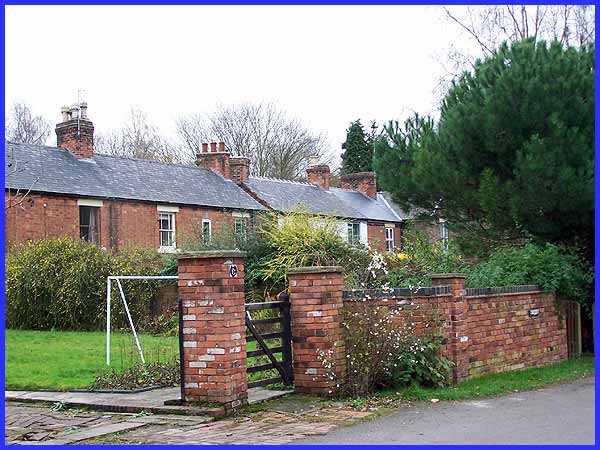
We left the railway route in Part 3 near another Station House
at The Field and nearby stand several cottages where the miners
and estate workers lived.
|
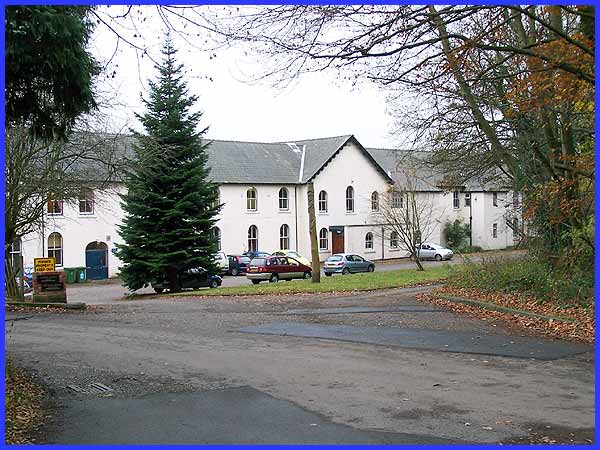
Across from the cottages were a number of colliery buildings
that have survived to the present day. Over the years the buildings
have been extended and added to and are now used by Michael House
School where the education follows the teachings of the Austrian
philosopher Rudolf Steiner.
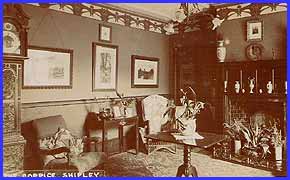 This seems
like a good place to include this picture of The Coppice for
as we left the railways and started down Dog Kennel Lane in Part
4 we passed the 1890 building that was used was as offices by
the Great Northern Railway Company and also the Shipley Colliery
Company. It is once again being used as offices but has served
time as both an inn and a restaurant. This seems
like a good place to include this picture of The Coppice for
as we left the railways and started down Dog Kennel Lane in Part
4 we passed the 1890 building that was used was as offices by
the Great Northern Railway Company and also the Shipley Colliery
Company. It is once again being used as offices but has served
time as both an inn and a restaurant.
Margery Carriere sent me several pictures (more later) all the
way from from Fonthill, Ontario, Canada including this one of
the interior of The Coppice obviously dating from a much earlier
time.
|
Jack Hallam has some memories of The Coppice in the
days of the National Coal Board when the house was the home of
the then Area Manager for the No.5 Area. He expected everyone
to bow to him when he passed by - how times have changed! Jack
also has vivid memories of the positions of all the coal mining
shafts in the area that have now either been filled in or capped
including several in the vicinity of the school. Two of them
were tandem shafts with two winding houses with timber framed
headstocks connected together.
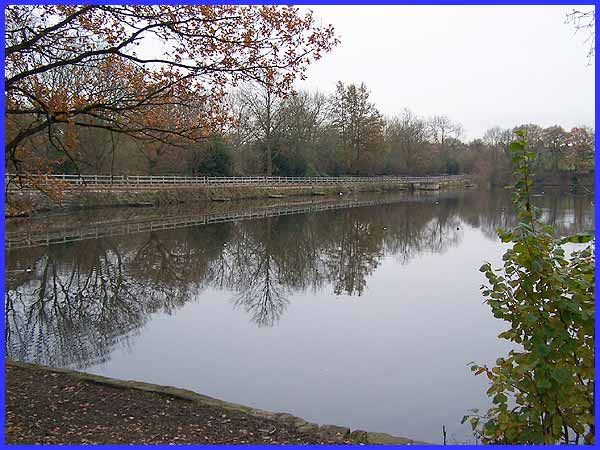
As we progressed down Dog Kennel Lane towards the cricket club
again in Part 4, mention was made of the water supply and the
feed for the Nutbrook Canal that was provided by Osborne's Pond
and Mapperley Reservoir. The reservoir between Shipley Hill and
Mapperley Village is now a popular venue for local anglers and
is surrounded by a nature reserve. Near the cricket club was
a small substation and Jack Hallam recalls that the generating
plant house was alongside the Suffragette Wall near a gateway
from the Lodge Walk/Coach Road.
|
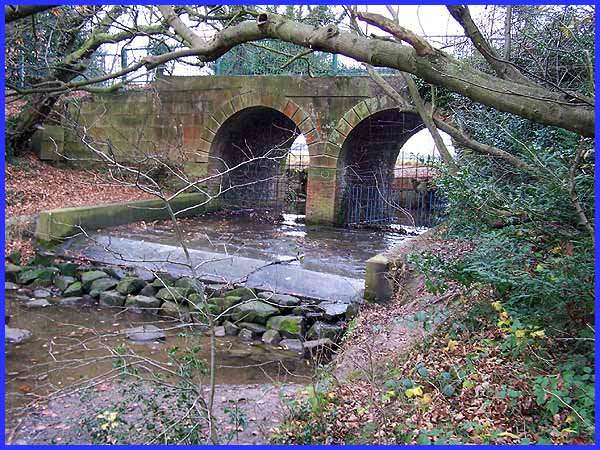
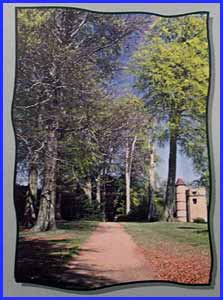 Part 5 took us
up Shipley Hill and another correspondent, Joseph Elliott, thought
this series was "fascinating as this is were I used to spend
most of my time in the summer" before he left home on the
Shipley View estate for university. In the holidays Joseph worked
for the now defunct American Adventure Theme Park but recalled
the route of the old Coach Road that ran from Cotmanhay Lodge
to the Hall and was mentioned in Part 6. Several bridges and
remnants of the original road can still be seen including this
bridge across the overflow from Shipley Lake into Paul's Arm.
The Nutbrook Trail now crosses the bridge but it is not difficult
to imagine the Miller-Mundys and their guests crossing in horse
and carriage. Part 5 took us
up Shipley Hill and another correspondent, Joseph Elliott, thought
this series was "fascinating as this is were I used to spend
most of my time in the summer" before he left home on the
Shipley View estate for university. In the holidays Joseph worked
for the now defunct American Adventure Theme Park but recalled
the route of the old Coach Road that ran from Cotmanhay Lodge
to the Hall and was mentioned in Part 6. Several bridges and
remnants of the original road can still be seen including this
bridge across the overflow from Shipley Lake into Paul's Arm.
The Nutbrook Trail now crosses the bridge but it is not difficult
to imagine the Miller-Mundys and their guests crossing in horse
and carriage.
Our perambulations in Parts 7, 8 and 9 took us around the Hall
site and the top of Shipley Hill where we walked along Beech
Walk to the Water Tower. Most if not all of the beech trees have
had to be felled because of disease and for safety reasons and
only their stumps remain but a poster in the Visitor Centre includes
this image (right) of Beech Walk when they were still standing.
There is also another image here from when I completed the British Heart
Foundation's Sponsored Walk - The Shipley Shuffle - in 2002 that
shows what a splendid feature the trees were.
|

But now back to the Visitor Centre and a closer look at the model
of Shipley Hall (left) with its main entrance (centre) and glass
corridor (right).
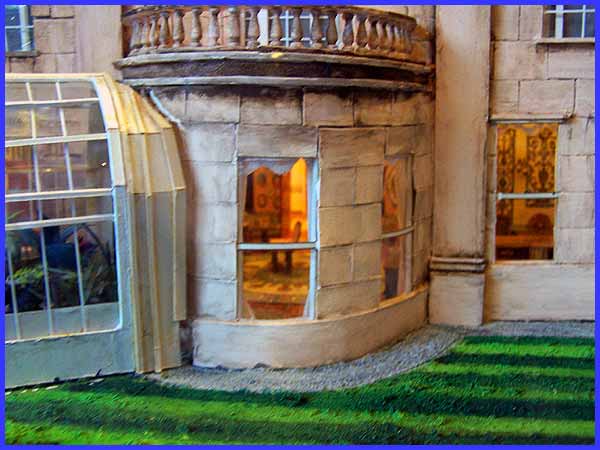
Someone has certainly gone to a lot of trouble with the model
and as much attention to the interior has been paid as to the
exterior. The interior of the Hall has been reconstructed from
photographs, an inventory taken in 1834 and knowledge of furnishings
and styles of the mid 1800s to early 1900s.
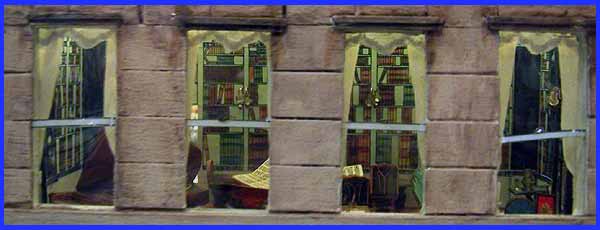
Peering in through the library windows shows just how much detail
has been included with not only books on the shelves but also
by newspapers scattered on the table.
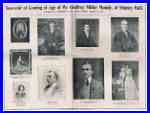 So far in this
series, we have seen much of the influence of the Miller-Mundys
on the landscape which was the original aim but have seen little
of the human face of the family apart from a portrait of Alfred
Edward, "The Squire" in the pavilion of the Shipley
Hall Cricket Club in Part 4. We can now put that to rights with
a few portraits of some of the members of the family extracted
from a document owned and scanned by Margery Carriere. The original
document was published as a supplement to the Ilkeston Pioneer
as a "Souvenir of Coming of Age of Mr. Godfrey Miller-Mundy"
in 1906. So far in this
series, we have seen much of the influence of the Miller-Mundys
on the landscape which was the original aim but have seen little
of the human face of the family apart from a portrait of Alfred
Edward, "The Squire" in the pavilion of the Shipley
Hall Cricket Club in Part 4. We can now put that to rights with
a few portraits of some of the members of the family extracted
from a document owned and scanned by Margery Carriere. The original
document was published as a supplement to the Ilkeston Pioneer
as a "Souvenir of Coming of Age of Mr. Godfrey Miller-Mundy"
in 1906.
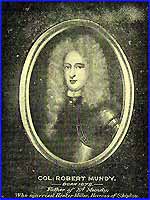
Col. Robert Mundy (1695-1708) and Ellen Slack's 4th son Edward
(1717-1767) married --
|
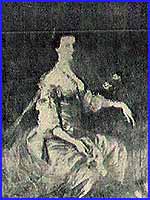
-- Hester Miller (1714-1767)
heiress of Shipley. They had
five children of whom --
|
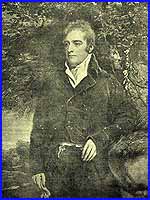
-- Edward (1st) Miller-Mundy
(died 1822) was one.
He married three times.
|
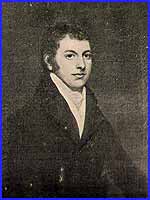
Edward (2nd) Miller-Mundy
(1744-1834) eldest son by the 1st's marriage to Francis Meynell.
|
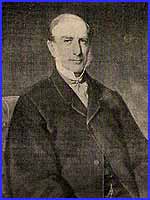
Alfred Miller-Mundy (1809-1877) only remaining child of Edward
(2nd) inherited the Hall in 1849.
|
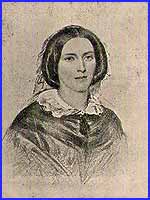
Mrs. A Miller-Mundy. 1849 was also the year Alfred's wife gave
birth to their son Alfred Edward.
|
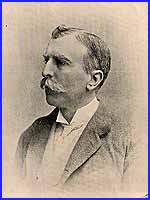
Alfred Edward Miller-Mundy (1849-1920) "The Squire".
|
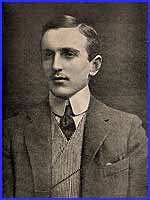
Godfrey Miller-Mundy
(born April 25, 1885).
|
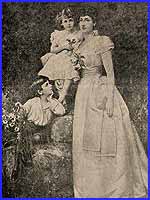
Godfrey aged 6 with his
mother & sister.
|
There is a more detailed look at the family tree
of the Miller-Mundys in Part 6. When Margery wrote to me with
scans of the souvenir, she also revealed some of her own family
history and a surprising connection with the Miller-Mundys. I'll
let her tell the story in her own words:-
"It is with great interest that I have been following
your recent series on Shipley Park - Miller-Mundy Memories. I
thought you might be interested in seeing my grandmother's Souvenir
of the Coming of Age of Mr. Godfrey Miller Mundy, of Shipley
Hall, likely occurring on or about August 17th, 1906.
My grandmother, Mary Ethel Hudson, was the daughter of Edwin
Hudson, the Station master at Ilkeston Junction, and one of his
duties was to escort the then Prince of Wales to Shipley Hall
to visit his friends the Miller-Mundys. When I was putting together
an album of old photos on the Smith-Hudson side of my family,
I was at a loss to pinpoint the location and especially the occasion
of this photo of my grandparents.
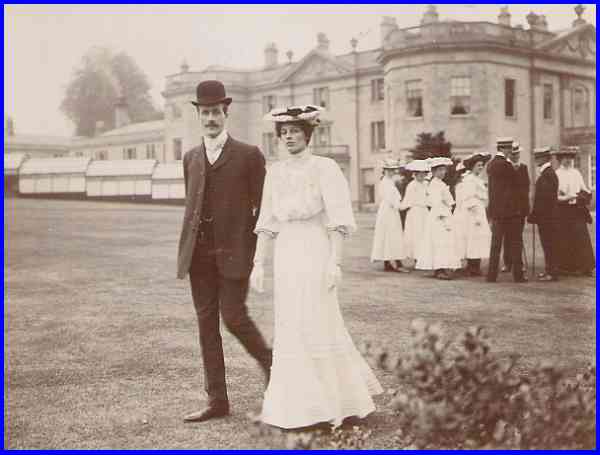
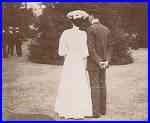 My grandfather,
at that time, was an apprentice landscape gardener and as such
was highly unlikely to hobnob with the elite of society. And
unfortunately, most of the old family photos included no explanation
of person or place. However, my second cousin in Australia, Bob
Sudbury (the youngest son of Ilkeston Architect Harry Tatham
Sudbury) was kind enough to send me copies of old photos he had
.... and included among them was one of "Shipley Hall".
I immediately recognised it as being the same estate as was in
the background in my grandparent's Garden Party picture. My grandfather,
at that time, was an apprentice landscape gardener and as such
was highly unlikely to hobnob with the elite of society. And
unfortunately, most of the old family photos included no explanation
of person or place. However, my second cousin in Australia, Bob
Sudbury (the youngest son of Ilkeston Architect Harry Tatham
Sudbury) was kind enough to send me copies of old photos he had
.... and included among them was one of "Shipley Hall".
I immediately recognised it as being the same estate as was in
the background in my grandparent's Garden Party picture.
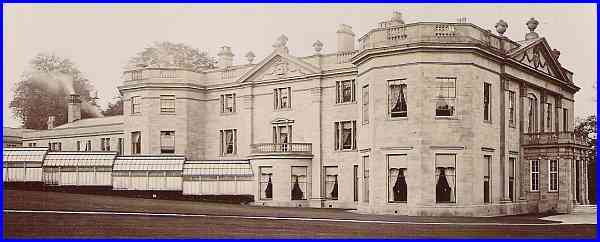
I was still at a loss to understand why my grandparents would
have been invited to such an event as the Coming of Age, but
surmise that it was either because my grandmother was the daughter
of the Station master, or that many of the young people in the
age group of Mr. Godfrey Miller Mundy would have been invited
from the surrounding area. Unfortunately, the copy of the Coming
of Age may not be as clear as I would like but it is still in
the large envelope that it came in, and has remained in excellent
condition for one hundred and one years."
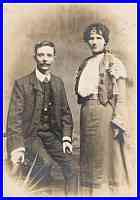 As we see from the
above, Margery also list Ilkeston's renowned architect Harry
Tatham Sudbury among her family members and she included a photo
of Harry and Annie Laura Hudson (left) that was taken around
the As we see from the
above, Margery also list Ilkeston's renowned architect Harry
Tatham Sudbury among her family members and she included a photo
of Harry and Annie Laura Hudson (left) that was taken around
the 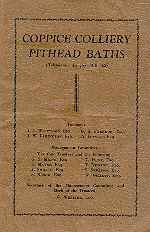 time of their marriage,
in 1903. Now Harry probably had as much influence on the architecture
of Ilkeston and its surroundings as the Miller-Mundys had on
the landscape of Shipley but that's a whole new story that probably
deserves a series in its own right. time of their marriage,
in 1903. Now Harry probably had as much influence on the architecture
of Ilkeston and its surroundings as the Miller-Mundys had on
the landscape of Shipley but that's a whole new story that probably
deserves a series in its own right.
As we started and ended our walk around Shipley Country Park
at the site of one of the Miller-Mundys' mines, the old Coppice
Colliery, we'll end this series with a couple of samples scanned
from a booklet sent to me this time from California by our friend
and oft-times correspondent, Roy Gregory. This is another souvenir
of sorts as it is a booklet issued to commemorate the opening
of the Pithead Baths on April 3rd, 1948.
Mining took place in the area long before the Miller-Mundys,
then the Shipley Colliery Company took over and the National
Coal Board. The Pithead Baths were opened as we can see in 1948
but deep shaft mining ceased in the 1960s to be followed for
a time by opencasting. A brief respite is due to end shortly
with the onset of more opencast mining nearby. It seems we have
gone full circle but the memories of the Miller-Mundy family
go on.
All that remains is to thank Roy, Margery, Jack,
Joseph, the Local History Societies at Ilkeston and Heanor, members
of the Shipley Hall Cricket Club, staff at the Green Health Partnership
and many more people too numerous to mention by name but not
forgetting the Rangers at Shipley Park and in particular, Gary
Wain whose notes and talk whilst guiding the Autumn Footprints
walk in 2006 inspired this series.
Back to Part 11 - Way Back
Use the Quick Links below to access other pages.
|